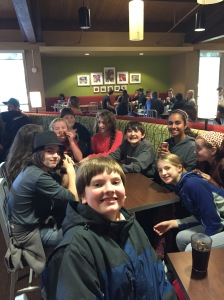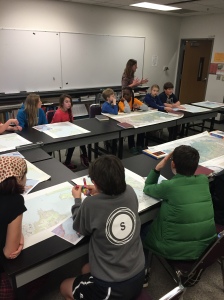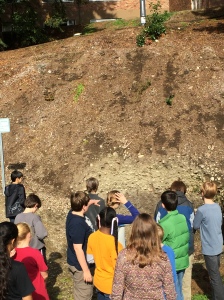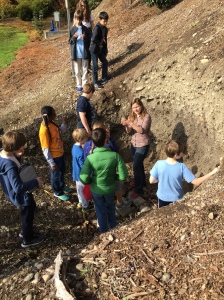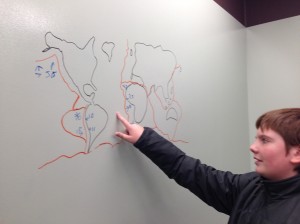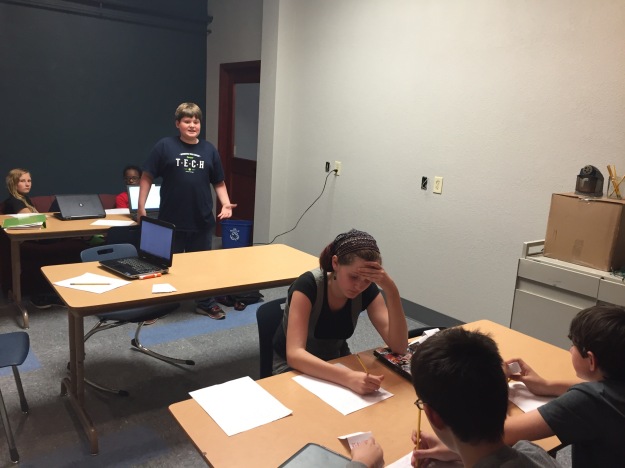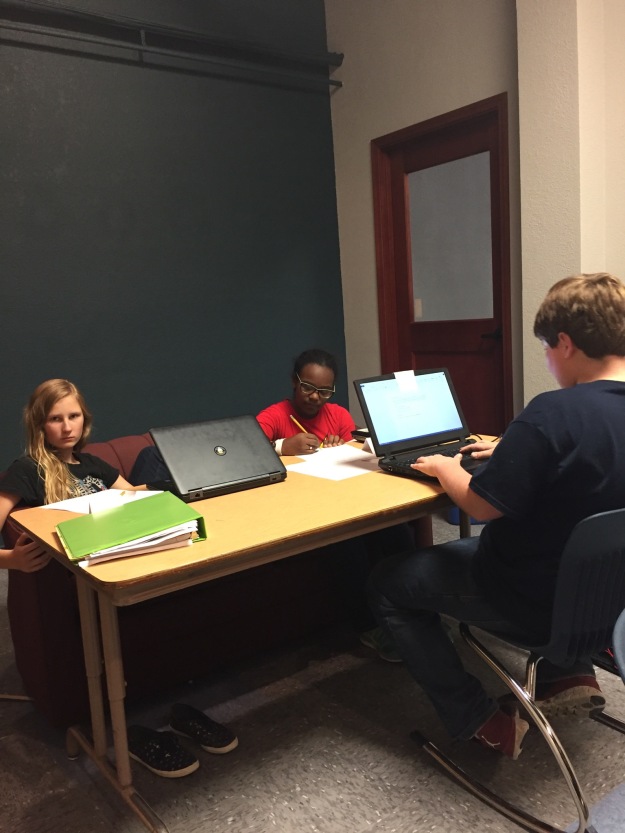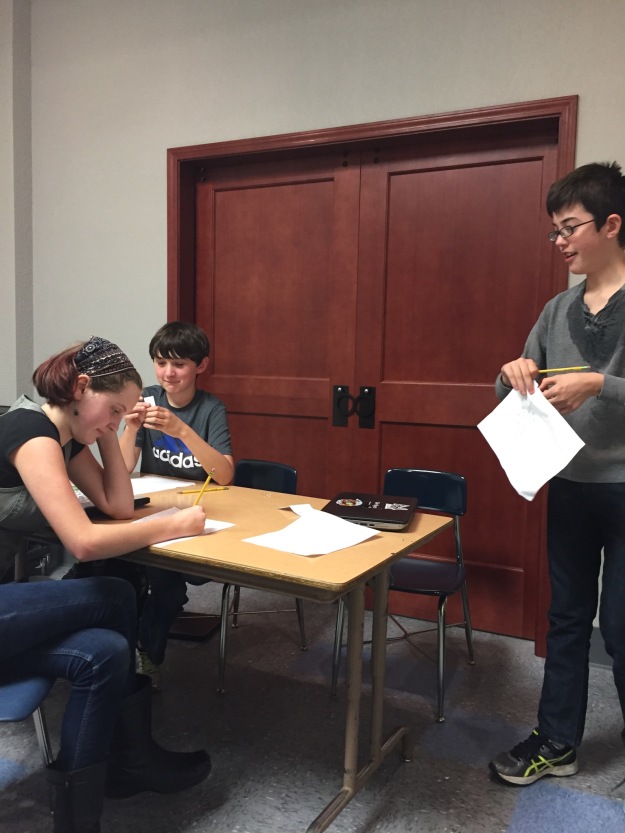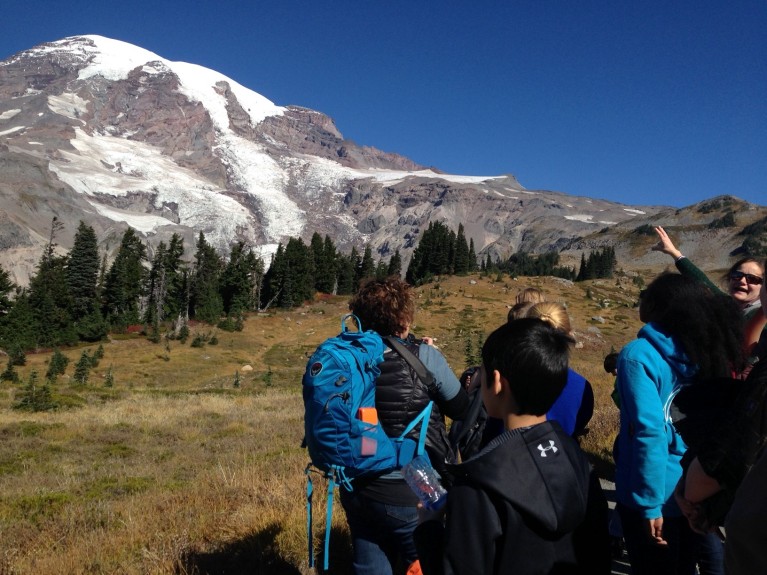At Seabury, students are scientists, historians, mathematicians, writers, etymologists, linguists, and engineers. We don’t just learn about subjects, we actively engage in them. A great example of this is our current study of geology. Instead of reading about glaciers in a book, we’ve been taking field studies to Mount Rainier and observing rock formations with Dr. Claire Todd, a professor at PLU.
This week, we had the opportunity to go to the PLU campus for lunch and field work with Dr. Todd.
Students eating lunch in the University Center
After lunch, we made our way to the Rieke Science Center, where Dr. Todd showed us maps of the Pacific Northwest, and how glaciers had affected the region. We found where Seabury was in the Puget Sound and what would have happened if we were around when the ice sheet covered the area. We discussed geologic sorting and how glaciers don’t sort rock like rivers and lakes do.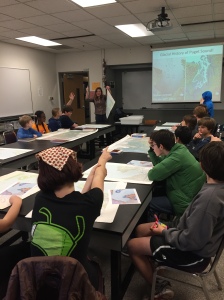
After that, we headed outside to really do some geological research. PLU has a pit that’s used by the geology department to study rocks in the area. Our students made observations on how we could tell glaciers were once in the area using geological clues.
Here are the observations they came up with:
- Most of the rocks are smooth, which is evidence of glacial erosion.
- There was no rock sorting like you’d see in places with rivers and lakes. Glaciers are unique in that they don’t sort rocks by size, like rivers and lakes do. You can see this in the layers of rocks in the pit.
- There were scratches on the rocks, which is evidence of glacial erosion.
- Most of the rocks were the same type.
- Most of the rocks were faceted with rounded features.
Dr. Todd also mentioned that most of the rocks were the same type that you would find in Canada, which is more evidence that they were brought down by glaciers.
Dr. Todd then showed us a faceted, glacial rock and students hypothesized theories about why it was so uniquely shaped. They came to the conclusion that because the tops of glaciers move faster than the bottom, the rock would flip and then get smoothed out again and again, which gave it its faceted shape. They then named the rock Clarence (they are still middle schoolers, after all).
It was a great opportunity for our students to really do science, and we thank Dr. Todd for all of her expertise and help!

